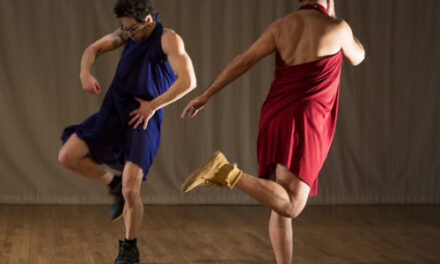There is nothing more deeply moving than the concerted effort and single-mindedness of a team of nearly one hundred young adults challenging and conquering the emotional peaks and profound open spaces of a symphony by Gustav Mahler. Details as intimate as a plucked mandolin, the ring of a finger cymbal, or a caressed portamento like a cello sighing, merge with ear-numbing, “in your face” chords to form a complex musical tapestry of monumental proportions. For many, in the audience (as well as on stage) this is the first experience of the tortuous labyrinth of musical emotions that is Mahler’s very personal style.
After Symphony No. 6 in A minor, magnificently played the evening before* by the student “Eastern Symphony Orchestra” under the direction of Grant Cooper, it was the turn of the other equally fine “Guilford Symphony Orchestra,” under the direction of new-comer Eric Garcia to present Mahler’s Symphony No. 7, a behemoth comprised of five movements. The Seventh is sometimes nicknamed the “Song of the Night” because of two movements which Mahler called Nachtmusik I and II (night music). These two movements flank a wonderfully wispy and volatile Scherzo, and they are, in turn, bookended by the opening movements – a traditional sonata form with a slow introduction and a Rondo of gigantic dimensions.
Opening with a drum-like tattoo in the strings, almost immediately one is confronted by a tenor horn solo, superbly played by William Wortley, an Eastman student originally from Wisconsin. Several outstanding solos were turned in by trumpeter Eric Rizzo. Obviously, Mahler had a special place in his heart for the horn, because memorable solos occur throughout the symphony, played expressively and almost flawlessly by Garrett Law, especially in the second movement (Nachtmusik I) which reminded this listener of the winds’ dialogue in the “Scene in the Fields” movement of Berlioz’ Symphonie fantastique.
Unfortunately the EMF Program book committed several errors of omission by not giving the full title of the movements along with the tempo indications we are used to reading. Most glaring was the title of the third movement which was listed simply as Scherzo, omitting the rest: “Schattenhaft; Fiessend aber nicht schnell; in den Ansfangstakten noch etwas zögernd” (Scherzo – Shadowy: Flowing but not fast; in the beginning bars still a bit hesitant). The “shadowy” effect was never apparent in this performance that was one of the swiftest I have heard. No doubt it was easier for the conductor to manage a faster, more concrete execution of this very difficult movement than to coax the orchestra of neophytes into the shadowy dusk of musical hesitation. Nonetheless, there were a couple of lovely solos from principal viola, Kayla Williams, who in the next movement picked up the mandolin for a serenade in the second night music, marked in the score “Andante amoroso,” but not in our programs! And there were some touchingly amorous moments between guitar, mandolin and some gorgeous solos by concertmaster Nathan Lowman and by principal oboe Kaila DeLaney. Otherwise, the movement felt long and a bit tedious. (Perhaps two Mahler symphonies in a row are too much?)
The Finale, in a grandiose rondo form, rivals the first movement in length as well as brilliance of orchestration. The appreciative audience roared its approval as Maestro Garcia asked the sections to rise one at a time to accept the ovation.
The concert opened with a sparkling performance of the Overture to the Mozart opera, Die Entfürung aus dem Serail (The Abduction from the Seraglio) conducted cleanly and clearly by the Maestra Jessica Morel, from Rolling Hills Estates, California. There will be a free Open House concert for all the nine Conducting Fellows on Sunday afternoon, July 26 at 12:00 noon, featuring the Eastern Festival Orchestra in Guilford College‘s Dana Auditorium.
On Saturday, August 1, Gerard Schwarz will lead the Festival Orchestra and Chorus in Mahler’s Second Symphony, the “Resurrection” in Aycock Auditorium on the University of North Carolina’s Greensboro campus. Please note this change of location!
*To read Part I of Mr. Perret’s Mahler review at EMF, please go here.
All information on upcoming EMF performances can be located on our calendar.











